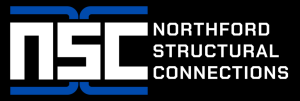

An example of a building utilizing Dry-Tek Facade Construction techniques.
Article Sponsored by:
Northford Structural Connections (NSC) specializes in innovative engineering solutions for enhancing the safety and durability of precast concrete structures. Their patented products, including the Double-Tee Flexible Connection (DTFC) and Double-Tee Connection Pro (DTC Pro), address critical challenges like fatigue, corrosion, and seismic resilience. With a focus on quality and longevity, NSC provides advanced connection systems trusted by industry professionals for both retrofitting and new construction projects.
As the construction industry evolves, DTFC, or Dry-Tek Facade Construction, becomes an increasingly relevant topic for professionals involved in building projects. This article addresses some of the common questions about DTFC and its application, providing clarity and insight for those considering its implementation.
DTFC stands for Dry-Tek Facade Construction. It is a methodology designed to enhance energy efficiency, sustainability, and the aesthetic appeal of buildings. By utilizing precast connections, DTFC allows for faster installation and reduces onsite construction time.
DTFC offers several advantages:
Precast connections in DTFC involve elements that are manufactured off-site and assembled on-site. These connections are engineered to fit together seamlessly, providing stability and structural integrity. They are designed to be lightweight yet robust, allowing for efficient use of materials.
Materials typically used in DTFC include concrete, steel, and various insulation components. The choice of materials depends on the project’s specifications and requirements. High-performance insulation materials can enhance the energy efficiency of the building.
DTFC can be utilized in various building types, including residential, commercial, and industrial structures. However, it is crucial to consider specific project constraints, zoning laws, and the suitability of DTFC concerning the building’s function and design.
DTFC promotes sustainability through energy-efficient designs and reduced waste. The precast elements minimize the amount of material wasted during construction, and the enhanced insulation properties reduce energy consumption in the long term. These factors contribute to lower operating costs and a smaller carbon footprint.
The primary difference between DTFC and traditional construction lies in the prefabrication process. In traditional construction, most elements are crafted on-site, leading to longer build times and potential inconsistencies. DTFC, through its use of precast connections, streamlines construction by facilitating off-site assembly and rapid on-site installation.
The initial costs of DTFC can be higher due to the specialized materials and manufacturing processes involved. However, the long-term savings in labor, time, and energy efficiency often outweigh initial expenditures, making it a financially viable option in the long run.
Yes, DTFC must comply with local building codes and regulations. This includes requirements for structural integrity, fire safety, and energy efficiency. It is essential to consult with professionals who are familiar with these regulations before embarking on a DTFC project.
Selecting a contractor experienced in DTFC is crucial. Look for firms with a proven track record of successful DTFC projects. Additionally, ensure that they understand the nuances of precast connections and have the necessary certifications and references to support their expertise.
DTFC presents a modern approach to building construction, with various benefits that cater to the demands of today’s construction landscape. Understanding the intricacies of DTFC, from the function of precast connections to compliance with regulations, helps ensure that projects meet both aesthetic and performance standards. For anyone considering this method, addressing key DTFC FAQ is an essential step towards successful implementation.

Concrete Strength • Metal Resilience • Connecting Futures
Phone: (203) 777-0751
Email: admin@nscclips.com
News Summary Myrtle Beach welcomes Golftopia, a new indoor golf simulation facility located within a…
News Summary Myrtle Beach is set to host the 2025 ONEflight Myrtle Beach Classic at…
News Summary Whispering Pines Golf Club is set for major renovations starting May 23, enhancing…
News Summary Golf lovers can now register for the 2025 Play Golf Myrtle Beach World…
News Summary South Carolina executed Brad Sigmon by firing squad on March 7, 2025, marking…
News Summary In a historic movement for South Carolina politics, the state Senate is considering…